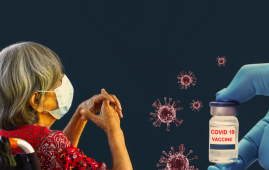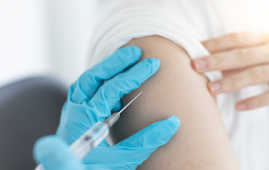Researchers looked at the presence of coronavirus antibodies to estimate the rate of infection. The existence of these antibodies varied by age, from as high as 75% in children and teenagers 17 and younger, to 33% in those 65 and older, for example.
The study showed that the antibodies were more common in age groups with the lowest vaccination numbers.
Combined with up-to-date CDC data on deaths, hospitalizations, and cases, the study provides a clearer picture of where we are now in the pandemic and where we might be headed.
COVID-19 Vaccination Still Valuable
The fact that nearly 60% of Americans have antibodies from prior infection is not a reason to think people with a history of COVID-19 should skip vaccination, CDC director Rochelle P. Walensky, MD, said.
“I can’t underscore enough that those with detectable antibodies from previous infection, we encourage them to still get vaccinated,” Walensky said.
“We do know that reinfections happen,” she said, “so that’s important in terms of thinking forward.”
The CDC still encourages all Americans to stay up to date with their COVID-19 vaccinations, said Clarke, co-lead for the CDC COVID-19 Epidemiology & Surveillance Taskforce Seroprevalence Team. “Having infection-induced antibodies does not necessarily mean you are protected against future infections.”
The study, was published in the CDC’s Morbidity and Mortality Weekly Report
Where Are We Now?
The current state of the pandemic is “mixed,” Walensky said.
“Overall, we can continue to have some mixed trends. Deaths, fortunately, are continuing to trend downward with a 7-day average of about 300 per day, which represents an estimated 18% decline from the prior week,” she said.
There was an increase of about 9% this week compared to the prior week.
Cases remain “comparatively low” to even where we were a month ago, at 44,000 per day,” Walensky said. “Although this, too, represents an increase of about 25% in the past week.”
Walensky said positive test numbers are not as reliable a metric as they were before the growth in use of rapid home tests. But it’s not the only measure.
We continue to believe that our PCR testing data, especially when we collaborate it with information from our other surveillance systems — like wastewater surveillance and emergency department surveillance, provide us a reliable picture of the trajectory of COVID-19 across our country.
She recommended people continue to consult the CDC COVID-19 County Tracker to monitor local levels of COVID-19.
“We’re just starting to learn about the impact of BA2.121,” Walensky said. “It appears it might have a transmission advantage of about 25% of over the BA2 subvariant.”











Leave a Comment